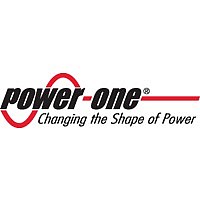PSC126-7LIRPCD Power-One, PSC126-7LIRPCD Datasheet - Page 5

PSC126-7LIRPCD
Manufacturer Part Number
PSC126-7LIRPCD
Description
Psc Series Extended Positive Switching Regulators Rugged
Manufacturer
Power-One
Datasheet
1.PSC126-7LIRPCD.pdf
(13 pages)
REV. MAY 12, 2004
Thermal Considerations
When a switching regulator is located in free, quasi-station-
ary air (convection cooling) at a temperature T
is operated at its nominal output current I
temperature T
phase, measured at the Measuring point of case tempera-
ture T
Under practical operating conditions, the ambient tem-
perature T
ures (heat sink, fan, etc.) are taken to ensure that the case
temperature T
95°C.
Example: Sufficient forced cooling allows T
simple check of the case temperature T
load ensures correct operation of the system.
Fig. 4
Output current derating versus temperature
Output Protection
A voltage suppressor diode which in worst case conditions
fails into a short circuit (or a thyristor crowbar, option C),
protects the output against an internally generated over-
voltage. Such an overvoltage could occur due to a failure of
either the control circuit or the switching transistor. The out-
put protection is not designed to withstand externally ap-
plied overvoltages. The user should ensure that systems
with Power-One power supplies, in the event of a failure, do
not result in an unsafe condition (fail-safe).
Parallel and Series Connection
Outputs of equal nominal voltages can be parallel-con-
nected. However, the use of a single unit with higher output
power, because of its power dissipation, is always a better
solution.
In parallel-connected operation, one or several outputs may
operate continuously at their current limit knee-point which
will cause an increase of the heat generation. Conse-
quently, the max. ambient temperature value should be re-
duced by 10 K.
Outputs can be series-connected with any other module. In
series-connection the maximum output current is limited by
the lowest current limitation. Electrically separated source
voltages are needed for each module!
1.0
0.9
0.8
0.7
0.6
0.5
0.4
0.3
0.2
0.1
0
I
o
T
/ I
A min
o nom
C
(see: Mechanical Data ).
A
may exceed 71°C, provided additional meas-
50
Convection cooling
C
C
does not exceed its maximum value of
will be about 95°C after the warm-up
60
70
Forced cooling
80
C
90
( T
C
A max
o nom
≤ 95°C) at full
A
100
= 71°C and
T
, the case
C max
= 85°C. A
T
A
[˚C]
Page 5 of 13
Positive Switching Regulators (Rugged)
Fig. 7
Definition of I
Short Circuit Behaviour
A constant current limitation circuit holds the output current
almost constant whenever an overload or a short circuit is
applied to the regulator's output. It acts self-protecting and
recovers – in contrary to the fold back method – automati-
cally after removal of the overload or short circuit condition.
1.2
1.0
0.8
0.6
0.4
0.2
Fig. 6
Typical inhibit current I
Fig. 5
Overload, short-circuit behaviour V
Auxiliary Functions
i Inhibit for Remote On and Off
Note: With open i-input, output is enabled ( V
The inhibit input allows the switching regulator output to be
disabled via a control signal. In systems with several units,
this feature can be used, for example, to control the activa-
tion sequence of the regulators by a logic signal (TTL, C-
MOS, etc.). An output voltage overshoot will not occur when
switching on or off.
V
I
inh
0
o
5
4
3
2
1
0
–50 –40
/ V
[mA]
o nom
PSC Series Extended Data Sheet
0.2
Vi+
Gi–
–30
V
inh
o
on
0.4
–20 –10
and V
0.6
inh
inh
versus inhibit voltage V
0
0.8
10
Go–
Vo+
i
20
1.0
o
versus I
V
I
o
30
o L
off
I
inh
1.2
V
40
inh
o
o
05033
06034
.
= on)
50
1.4
inh
I
V
o
06009
/ I
inh
o nom
[V]












